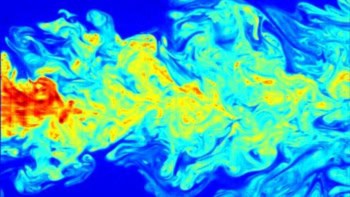Heat always flows from a hot body to a colder one. However, ten years ago theorists predicted that the temperature of a gas could exceed that of a source heating it if the fluid was at the liquid-vapour transition point. This process, which is called local overheating, has now be observed for the first time in a joint US-French experiment on the Mir space station. The experiment also observed a related process, a weak heat-transfer mechanism known as adiabatic compression (Phys. Rev. Lett. 84 4100).
On Earth, convection or thermal diffusion dominates heat transfer. But these effects are extremely weak in zero gravity, and adiabatic compression can dominate. To observe local overheating and adiabatic compression, Régis Wunenburger from the University of Bordeaux and colleagues placed a small cylinder containing sulfur hexafluoride (SF6) in both its liquid and gas forms on Mir last year. The compound was heated to just below 318.5 Kelvin – its liquid-vapour transition point – to reduce the effect of heat diffuison on the liquid and to induce adiabatic compression.
When the SF6 was slowly heated above this point, Wunenburger and co-workers discovered that the expanding fluid outer layer squeezes the inner gas bubble within seconds. This process heats the inner core to temperatures some 23% higher than the cylinder walls. However, after 130 seconds or so, the system strives to reach equilibrium, and diffusion cools the gas to the same temperature as the liquid and walls.



